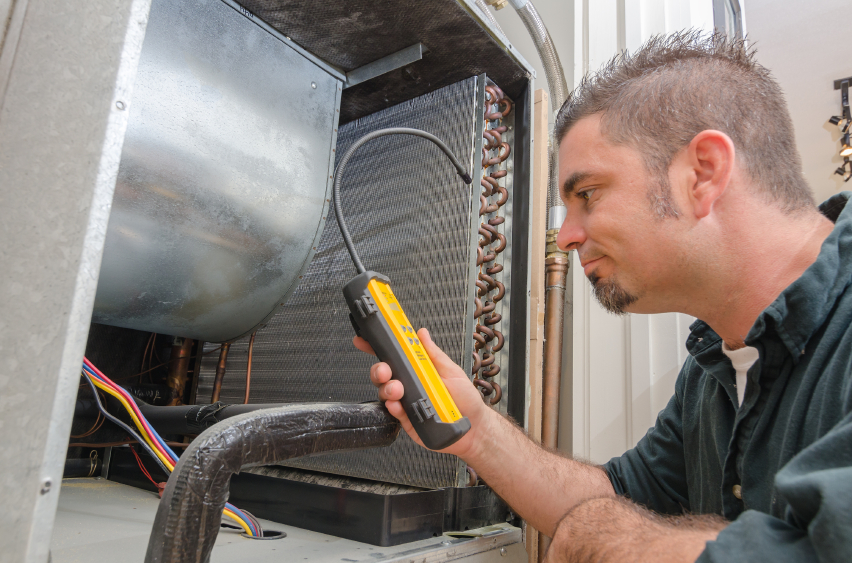 |
Owners of equipment with charges of more than 50 pounds (lb) of refrigerant are required to repair leaks in the equipment when the leak rates exceed a certain percentage of the charge over a 12-month period. For commercial and industrial process refrigeration, the leak rate requiring repair is 35 percent or more of the charge in a year. For comfort-cooling appliances and other appliances, leaks must be repaired when the leak rate is 15 percent or more. The leak rate must be calculated each time refrigerant is added to the appliance according to either the annualized method or the rolling average method established under 40 CFR 82.152.
4 Steps to Guard Against Refrigeration Leaks
If your facility has a refrigeration system that uses regulated refrigerants, here are four basic steps that can help reduce the likelihood of a violation:
- Know the full charge. The full charge is the amount of refrigerant necessary for the system/equipment to operate normally. This information is typically available from the manufacturer.
Why is it important to know the full charge?
- EPA’s leak repair requirements only apply to systems/equipment with a full charge of refrigerant greater than 50 lb in any independent refrigeration circuit.
- The full charge must be known to calculate the leak rate for the system/equipment.
Forget expensive calls to lawyers and consultants. With Enviro.BLR.com, you get instant access, 24/7. Try it out today and get the 2015 EHS Salary Guide, absolutely free. Download Now.
- Calculate the leak rate. Each time you add refrigerant to a system/equipment with a full charge greater than 50 lb, calculate the leak rate as soon as possible.
How is leak rate calculated? The leak rate is expressed in terms of the percentage of the appliance’s full charge of refrigerant that would be lost over a 12-month period if the current rate of loss were to continue over that period. The rate must be calculated using the same method (i.e., either the annualized method or the rolling average method) for all appliances located at a facility.
- Make repairs, retrofits, or retirements within the appropriate timeline. If the leak rate is above the trigger rates, you will have to repair, retrofit, or retire the system/equipment.
What are the trigger rates?
- For commercial refrigeration (i.e., retail food or cold storage warehouse refrigeration): 35%
- For industrial refrigeration (i.e., chemical, pharmaceutical, petrochemical, and manufacturing industries): 35%
- For comfort cooling (i.e., rooftop air-conditioning units): 15%
In general, leaks must be repaired by certified technicians within 30 days of exceeding the trigger rate. However, leaks need not be repaired if, within 30 days of discovering a leak exceeding a trigger rate, a plan is developed to retrofit or retire the leaking equipment within 1 year.
Everything You Need for Environmental Compliance
Enviro.BLR.com puts everything you need at your fingertips, including practical RCRA, CAA, CWA, hazardous waste regulatory analysis and activity, news, and compliance tools. Try it at no cost or risk and get a FREE report.
- Keep good records. One of the keys to compliance with any environmental regulation is recordkeeping. Any time work is conducted on refrigeration equipment always maintain records of what work was conducted, the date of the work, and the quantity of refrigerant added. If a retrofit or retirement plan is developed, ensure it is dated and a copy is maintained on-site. Records for ozone-depleting refrigerants must be kept for a minimum of 3 years unless otherwise indicated in 40 CFR 82.166.
